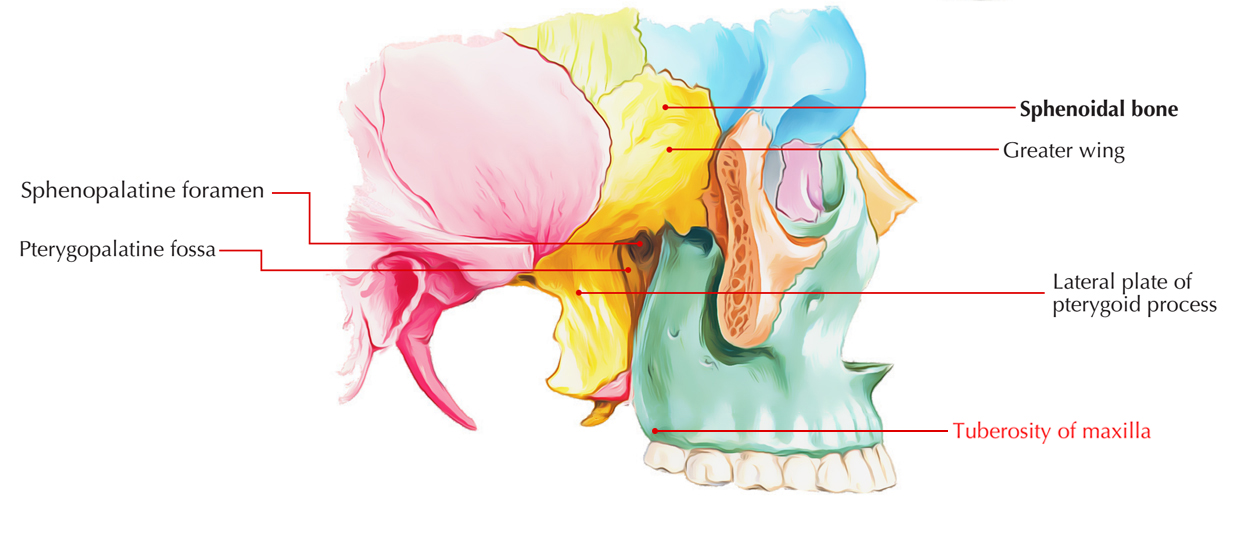A protrusion of bone known as the maxillary tuberosity is the most posterior portion of the maxillary alveolar process.

Maxillary Tuberosity
- A notch called the hamular notch distinguishes the maxillary tuberosity of each maxilla from the neighboring pterygoid process of the sphenoid bone.
- On its lateral side, maxillary tuberosity is irregular for attaching with
- The pyramidal process of the palatine bone.
- The lateral pterygoid plate of the sphenoid occasionally.
- A few fibers of the pterygoideus internus get their origin from maxillary tuberosity.
- Directly superior to this is a smooth surface, which creates the anterior margin of the pterygopalatine fossa.
It has a groove, for the maxillary nerve, which is is directed laterally and a little superiorly and is constant on the orbital surface, with the infraorbital groove.

 (47 votes, average: 4.83 out of 5)
(47 votes, average: 4.83 out of 5)